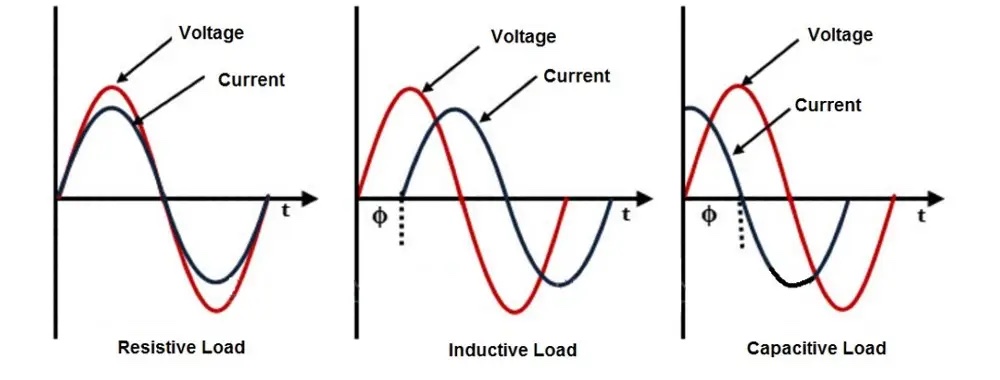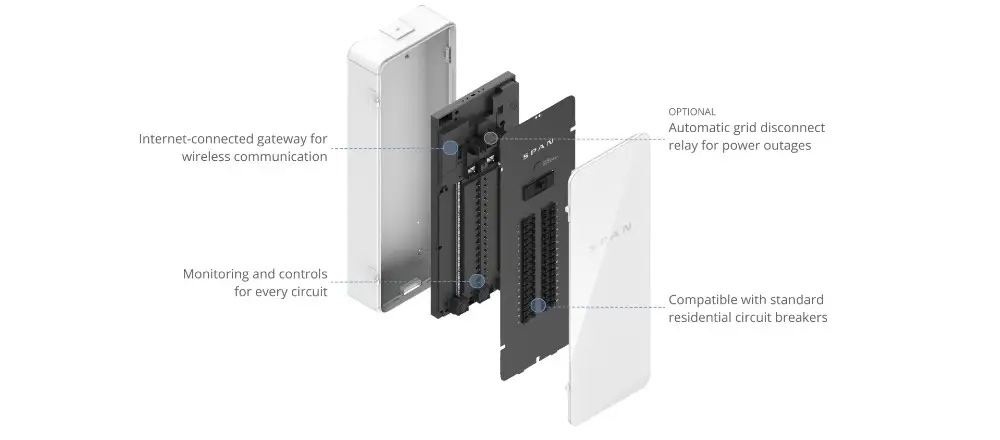Updated 3 months ago
What is an electrical load?
Written by Cameron Bates Cameron BatesCameron is a business analyst and content specialist at SolarReviews. He has a strong passion for sustainable energy and ensuring that American famili...Learn more , Edited by Zeeshan Hyder Zeeshan HyderZeeshan is a solar journalist who has long been passionate about climate issues and developed a deep interest in solar power after witnessing its succ...Learn more

Why you can trust SolarReviews
SolarReviews is the leading American website for solar panel reviews and solar panel installation companies. Our industry experts have a combined three decades of solar experience and maintain editorial independence for their reviews. No company can pay to alter the reviews or review scores shown on our site. Learn more about SolarReviews and how we make money.
If you have any appliance within your home that uses electrical power, then you possess an electrical load. Whether it be a washing machine, air conditioner or light bulb, your appliances require an electrical load to do their job.
For homeowners, understanding what an electrical load is, and why it matters, can be very important. This is because your electrical load affects your electric bill, and can also impact your choice when it comes to installing solar and battery storage.
Definition of electrical load
There are a number of different classifications and definitions of an electrical load. But in this article, we will be focusing on two definitions that are the most important for homeowners to understand.
An electrical load is any device that consumes electrical energy and transforms it into another form. These devices will consume electrical energy in the form of a current and transform it into another form. The electrical energy is often transformed into forms such as light, motion or electric heat.
An electrical load refers to the measure of the total amount of electricity required to operate an appliance, the lights or outlets.
Types of electrical loads
Within your home there are three main electrical load types that you may come across. These three load types are most commonly known as resistive loads, inductive loads and capacitive loads.
Resistive loads
A resistive load is any electrical load that consists of a heating element. A resistive load draws an electrical current in a sinusoidal waxing-and-waning pattern in sync with a sinusoidal variation in voltage. This means that resistive loads hold both current and voltage values that remain in sync.
Resistive loads can be found in devices such as:
Incandescent lights
Toasters
Ovens
Space heaters
Inductive loads
An inductive load, otherwise known as a lagging load, uses wire coils to create individual inductive fields. Unlike resistive loads, inductive loads current follows the sinusoidal pattern and peaks immediately after voltage sine wave’s peaks. This means that each wave's maximum, minimum and zero points aren’t in phase with each other.
Inductive loads can be found in devices such as:
Dishwashers
Washing machines
Refrigerators
Air conditioners
Electric motors
Capacitive loads
Similar to an inductive load, a capacitive load has both current and voltage waves which are out of phase. However, a key difference with a capacitive load is that the current reaches its peak before the voltage does. Capacitive load elements also provide the largest power factors and are often used to boost electrical circuits.
Unlike inductive and resistive loads, capacitive loads will not exist in a stand-alone format. Capacitive loads are used in tandem and to support other electrical loads, especially inductive loads.

Image source: Electronics Lovers
Why is it important to understand your electrical load?
Perhaps the most important reason for understanding your electrical load is to gain an insight into your home’s energy usage. Your electrical load provides you with the amount of power your appliances and home need to operate and therefore gives a great indication to the amount of power your home will use.
Knowing the electrical loads of all your home's major appliances will also allow you to gain greater control over your monthly electricity bill.
Understanding the electrical load of your appliances and home is also vital if you’re on a demand charge rate. A demand charge rate is a tariff set by your utility that looks at your highest power demand during a period and charges you based on that rate. By managing what electrical loads are used at any one time you’ll be able to lower your maximum power demand and reduce your demand charge-based electric bill.
How to calculate your home’s electrical load capacity
Calculating your electrical load can be useful to ensure that you have an electrical service with the capabilities of meeting your home’s needs.
There is a method of electrical load calculation that has been developed by industry professionals and is often used by homeowners. This method shows you how many amps your home needs.
Add together the wattage of all general lighting circuits.
Add together the wattage of all plug-in outlet circuits.
Add together the wattage rating of permanent electrical appliances (dryers, water heaters, dishMeasuring your electrical loadwashers, etc.)
Subtract 10,000 from the total.*
Multiply the sum by 0.4.
Add 10,000 to the sum.
Compare the wattage of your air conditioner with the wattage of all your major heating appliances. Then add to the total the larger of the two numbers. Only add the largest number as you will only ever be using one of these appliances at any certain time.
Divide the number of watts by volts - most homes use 240 volts - to get the total load.
*You may be wondering why steps 4-6 are required. They take place on the assumption that you’re not going to be using 100% of your electrical appliances simultaneously. As a rule of thumb, your maximum energy use will be 10,000 watts plus 40% of your home's remaining watts.
These calculations will show you an estimate of the total amperage required to power your home. Using this figure, you can evaluate whether your current electrical service is adequate. The services of electrical providers usually range from 100 amps for a smaller home, to 400 amps for homes over 3,500 square feet.
Other options to calculate load include using an online load calculator, or having your load calculated by a professional electrician.
There are also electrical panels, such as the Span Smart Panel, which offer you an insight into your home’s electrical system. The Span Smart panel and related products allow you to measure electrical loads for each of your home's circuits, in real time. You’re also able to control any circuit or appliance in your home.
Learn more: Span electrical panel: a digital upgrade of your analog electrical panel

Image source: Span
Impact of your electrical load on your solar panel system size
Your home's electrical load is a valuable insight into past, present and future energy usage. That’s why your electrical load is an important factor in sizing your solar system, especially if you’re looking to cover 100% of your energy usage from solar panels.
The electrical load of your home and individual appliances should also be taken into consideration if you’re looking at an energy storage solution. Knowing the power requirements of your appliances, and your home as a whole, will assist you in determining the size and type of backup battery you require. All backup power sources have limitations on the electrical load they can supply, so you’ll want to choose a solution that offers enough capacity for your needs.
Furthermore, your electrical load will help determine how long your battery backup can power your home and whether it has the ability to power all loads or just critical loads.
In short, conducting a thorough electrical load assessment is an important step in designing and installing an appropriate solar panel system with battery storage.
Learn more: How solar battery backup systems work
Key takeaways
An electrical load refers to any device that consumes electrical energy and transforms it into another form.
An electrical load can also refer to the measure of the total amount of electricity required to operate an appliance, the lights or outlets.
Understanding your electric load is important to gain an insight into your home’s energy usage.
Knowing your electric load can assist you in selecting the appropriate solar power system and energy storage solution.
Cameron is a business analyst and content specialist at SolarReviews. He has a strong passion for sustainable energy and ensuring that American families are informed on the environmental and financial benefits of solar energy....
Learn more about Cameron Bates